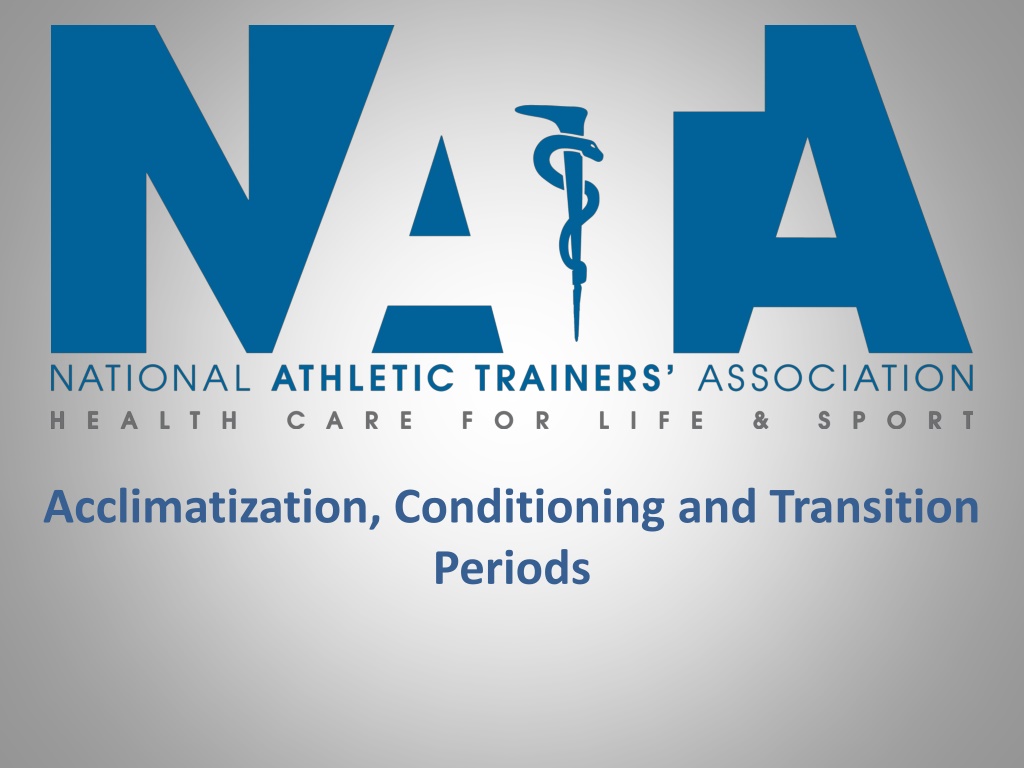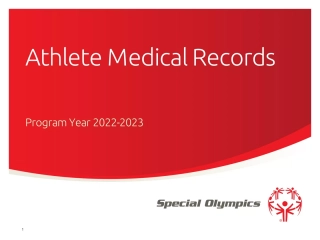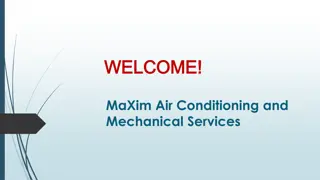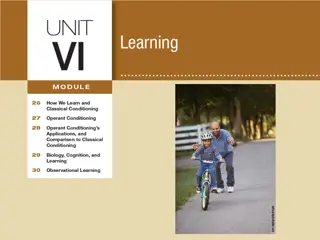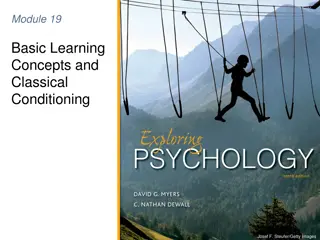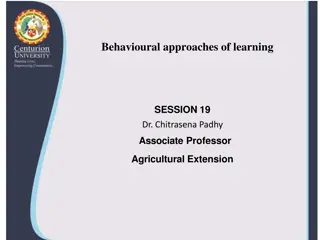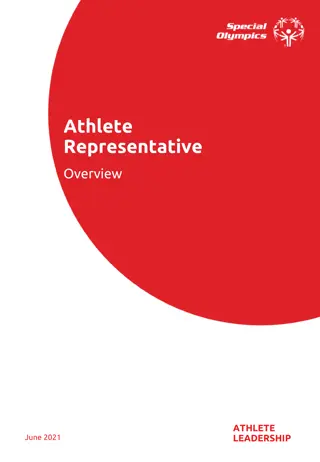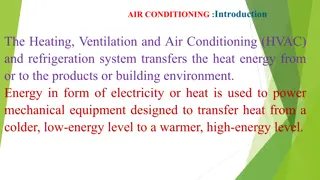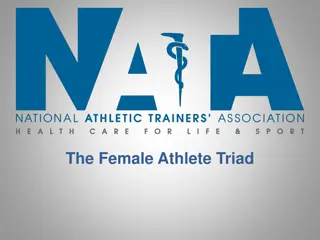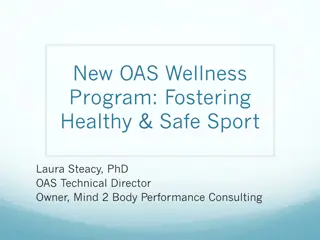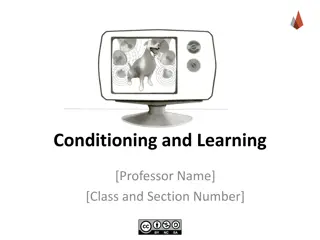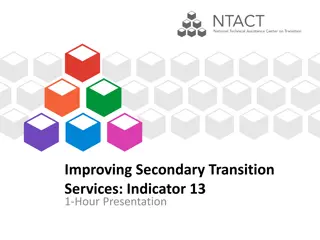Guidelines for Safe Athlete Transition and Conditioning
Guidelines for safe athlete acclimatization, conditioning, and transition periods are essential to prevent injuries and heat-related illnesses. The body takes approximately 7-10 days to acclimatize to physiological stress following time off from sports. Different transition periods for individual and team scenarios are outlined, emphasizing the importance of proper preparation, communication, and emergency action plans. Checklists for training and conditioning sessions provide key steps such as credential verification, annual in-services on acclimatization, athlete screenings, and emergency plans. Considerations stress the gradual and intentional introduction of training sessions to minimize adverse effects on athletes.
Download Presentation

Please find below an Image/Link to download the presentation.
The content on the website is provided AS IS for your information and personal use only. It may not be sold, licensed, or shared on other websites without obtaining consent from the author. Download presentation by click this link. If you encounter any issues during the download, it is possible that the publisher has removed the file from their server.
E N D
Presentation Transcript
Overview Many non-traumatic deaths and heat related illnesses occur during the first week back following time off from sport activity or during a transition period It takes approximately 7-10 days for the body to acclimatize to the physiologic and environmental stresses placed upon it at the start of a conditioning or practice period Athletes are especially vulnerable to exertional injuries and illnesses during the first 4 days
Transition Periods Individual Transitions Athletes that are new to the program Athletes returning from injury or illness Any delayed participation relative to the team schedule Team Transitions Resumption of training after an academic break or period of inactivity (e.g., winter, spring, summer breaks) Any new conditioning cycle in the annual periodized program Environmental stresses (e.g., heat, altitude)
Checklist Prior to Training & Conditioning Sessions Strength and conditioning staff should be properly credentialed and a verification process should be established Annual in-service on acclimatization should be led by Sports Medicine or Sports Performance and should involve coaches, strength and conditioning staff and any other designated personnel associated with the training of athletes Ensure coaches, strength and conditioning staff and others involved with training are current with CPR/ First Aid certification Establish a method of communication between coaches, sports medicine and strength and conditioning to review workouts
Checklist Prior to Training & Conditioning Sessions Ensure all athletes have current pre-participation physical exam and medical history questionnaire performed prior to training and conditioning Consider athlete cardiac screenings (e.g., electrocardiogram) prior to any physical conditioning to detect asymptomatic cardiac conditions Emergency action plans for each venue of training should be practiced and known by all coaches and staff involved with the training and conditioning of athletes
Considerations Training and conditioning sessions should be introduced intentionally, gradually and progressively to minimize adverse effects on health Lack of progression and sport-specificity in the volume, intensity, mode and duration of conditioning programs in transition periods has been a primary factor in non- traumatic fatalities All sources of physical activity should be accounted for during transition periods Additional volunteer activities not part of the structured program should be avoided (e.g., 7-on-7 drills, pickup games, drill work)
Considerations Training and conditioning sessions should be exercise-science based and physiologically representative for each particular component of the sport
Considerations Collegiate athletes are especially vulnerable to exertional injuries during the first 4 days of transition periods and data supports modifications in this time frame, greatly decreases the risk of catastrophic events Limitations on total volume and intensity of activity should be considered (e.g., one training session per day) The following should be considered when phasing in activity: Days of activity per week Body part Activity/ exercise Sets/ repetitions/ distance Load Work-rest ratio Modifications: position; individual; return from injury; environment
Training and Conditioning Sessions Should be approved by credentialed strength and conditioning professional or sports medicine/ sports performance professional Should address exercise volume, intensity, mode and duration Ensure the location of training session is identified for emergency action planning Be reproducible upon request and shared with primary athletics health care providers (physicians, athletic trainers) Be modified in response to environmental conditions
Heat Acclimatization Should occur through repeated exposure to a hot environment while progressively increasing the volume and intensity of physical activity to reduce the risk of exertional heat illnesses (EHI) Modify training sessions length and intensity according to heat index and institutional policy Identify athletes that or more predisposed or have a history of heat illness Educate training staff on the signs and symptoms of heat illness
References NATA Intercollegiate Sports Medicine Council Guidance on Inter-association Recommendations: Preventing Catastrophic Injury and Death in Collegiate Athletes https://www.nata.org/sites/default/files/icsm_guidelines_for_preventing_catastrophi c_death_in_collegiate_athletics.pdf NCAA Sport Science Institute Preventing Catastrophic Injury https://ncaaorg.s3.amazonaws.com/ssi/injury_prev/SSI_PreventingCatastrophicInjury Booklet.pdf CSCCA and NSCA Joint Consensus Guidelines for Transition Periods https://journals.lww.com/nsca- scj/Fulltext/2019/06000/CSCCa_and_NSCA_Joint_Consensus_Guidelines_for.1.aspx NATA Intercollegiate Sports Medicine Council Reminders and Recommendations for Sport Following Transition Periods https://www.nata.org/sites/default/files/transition_periods_final.pdf
